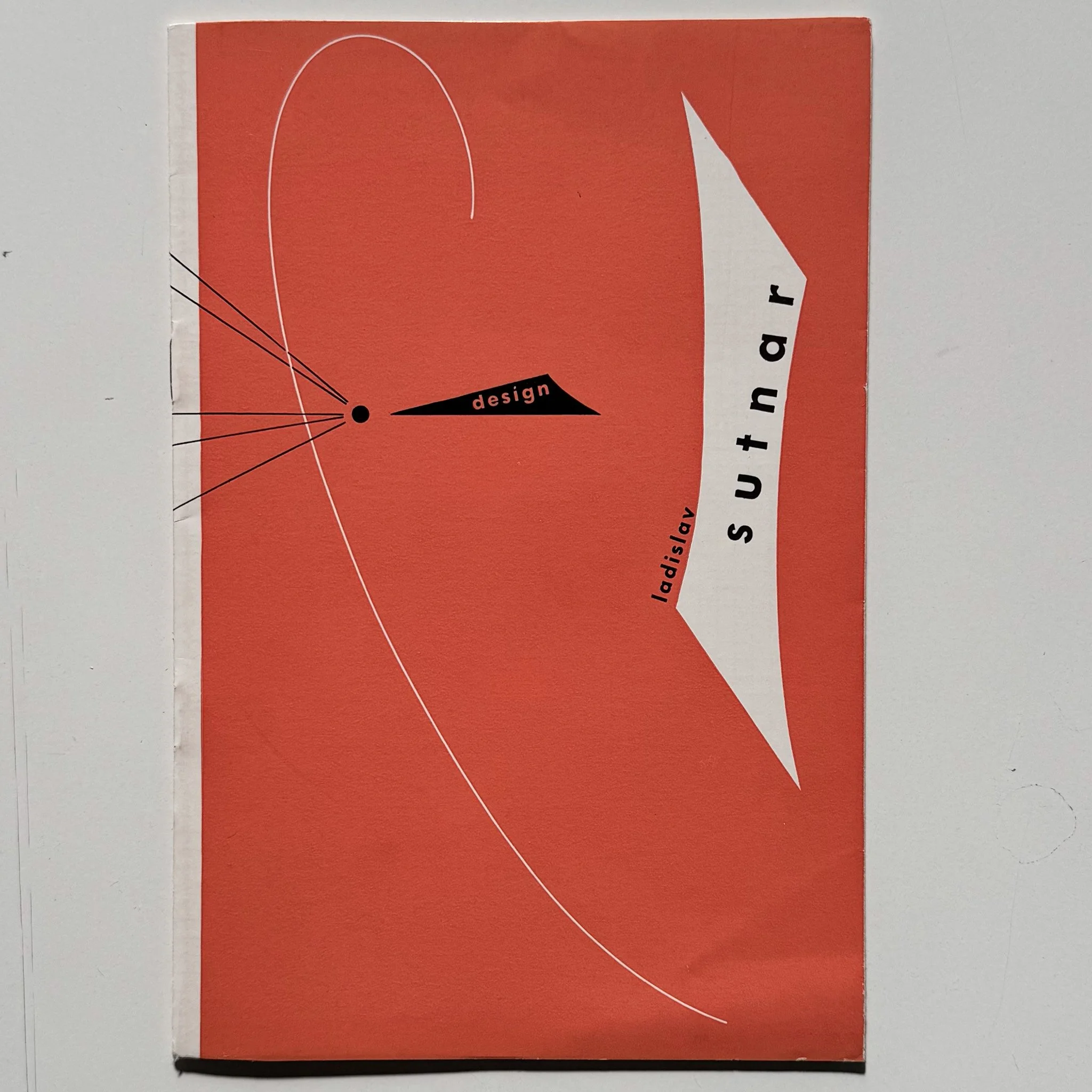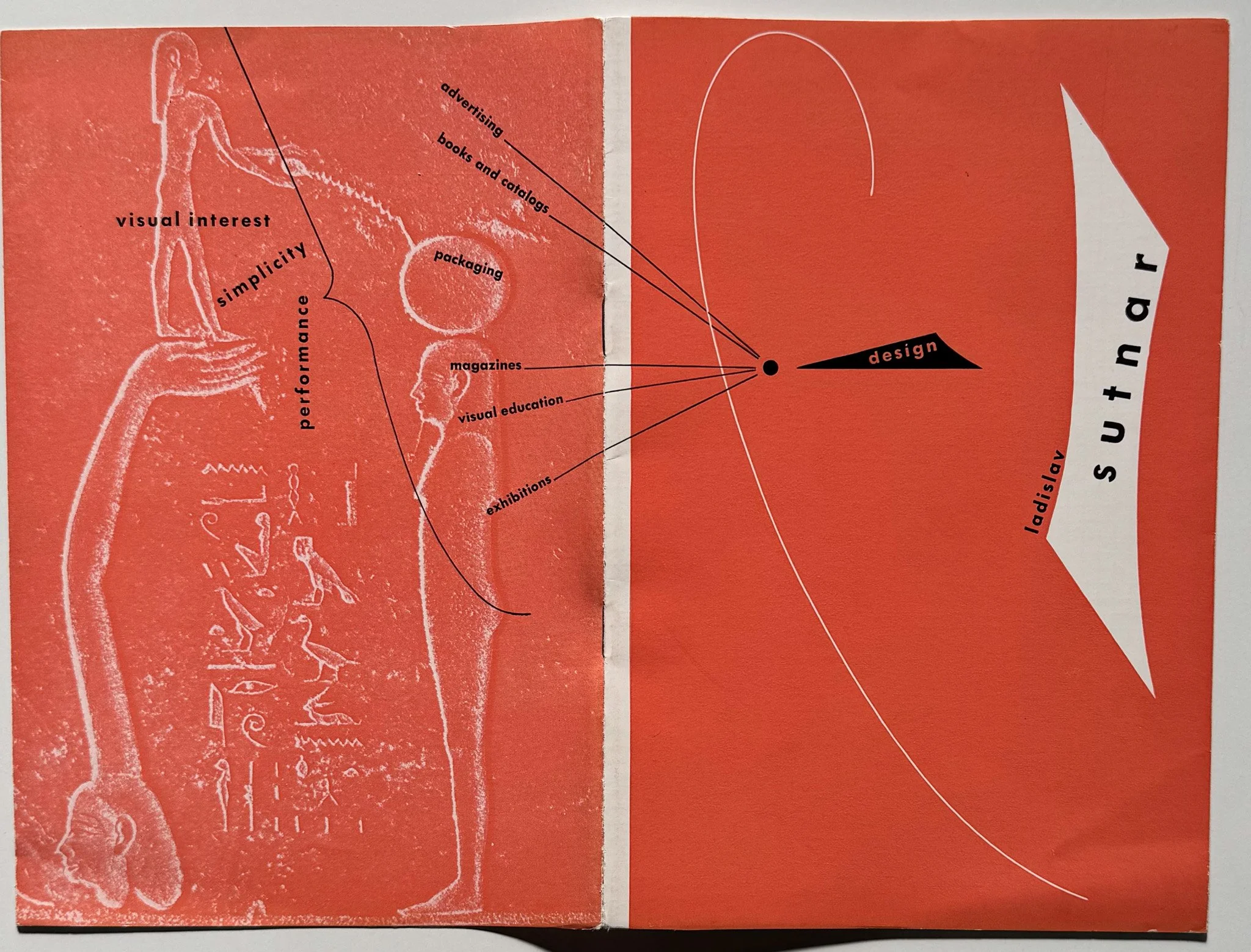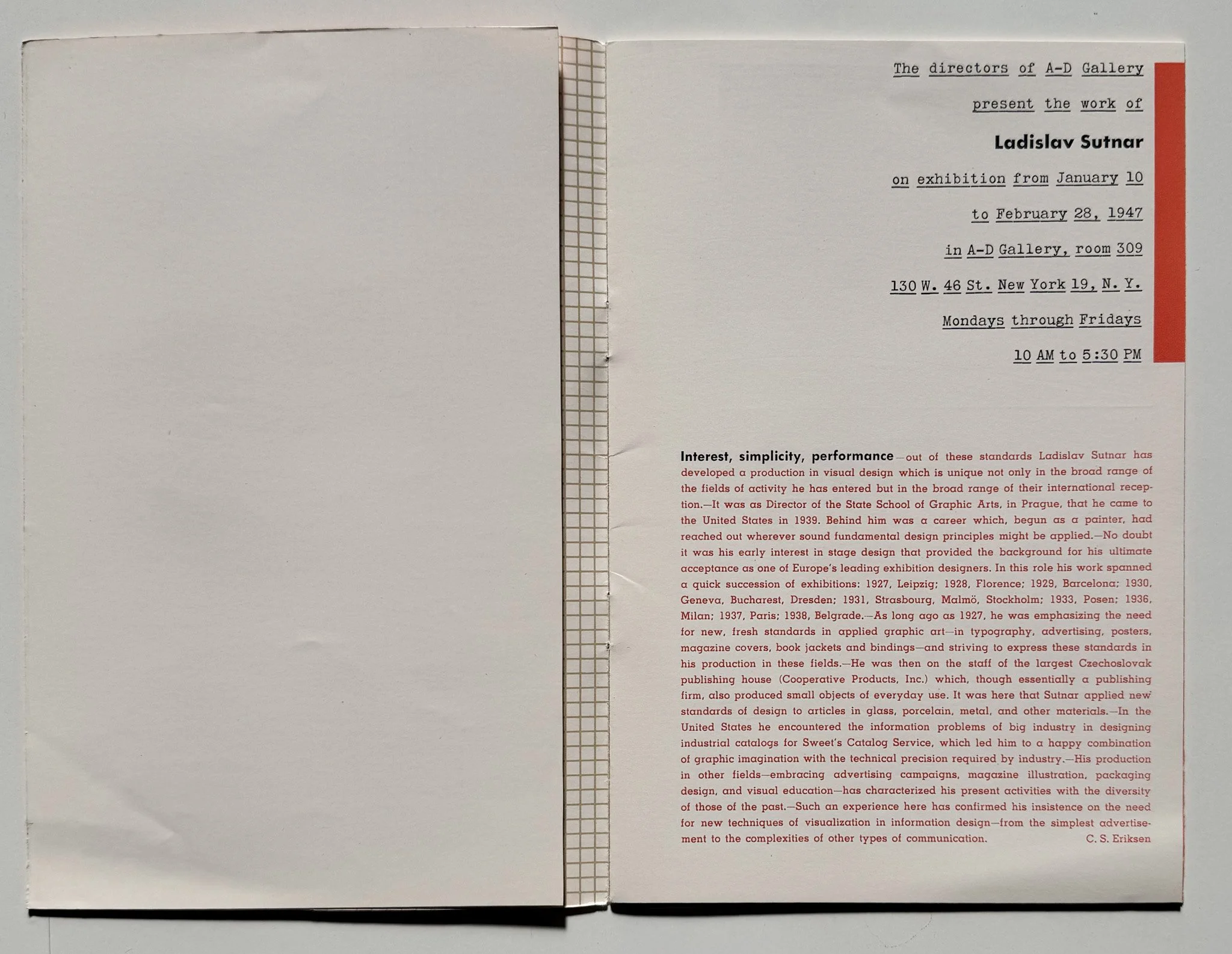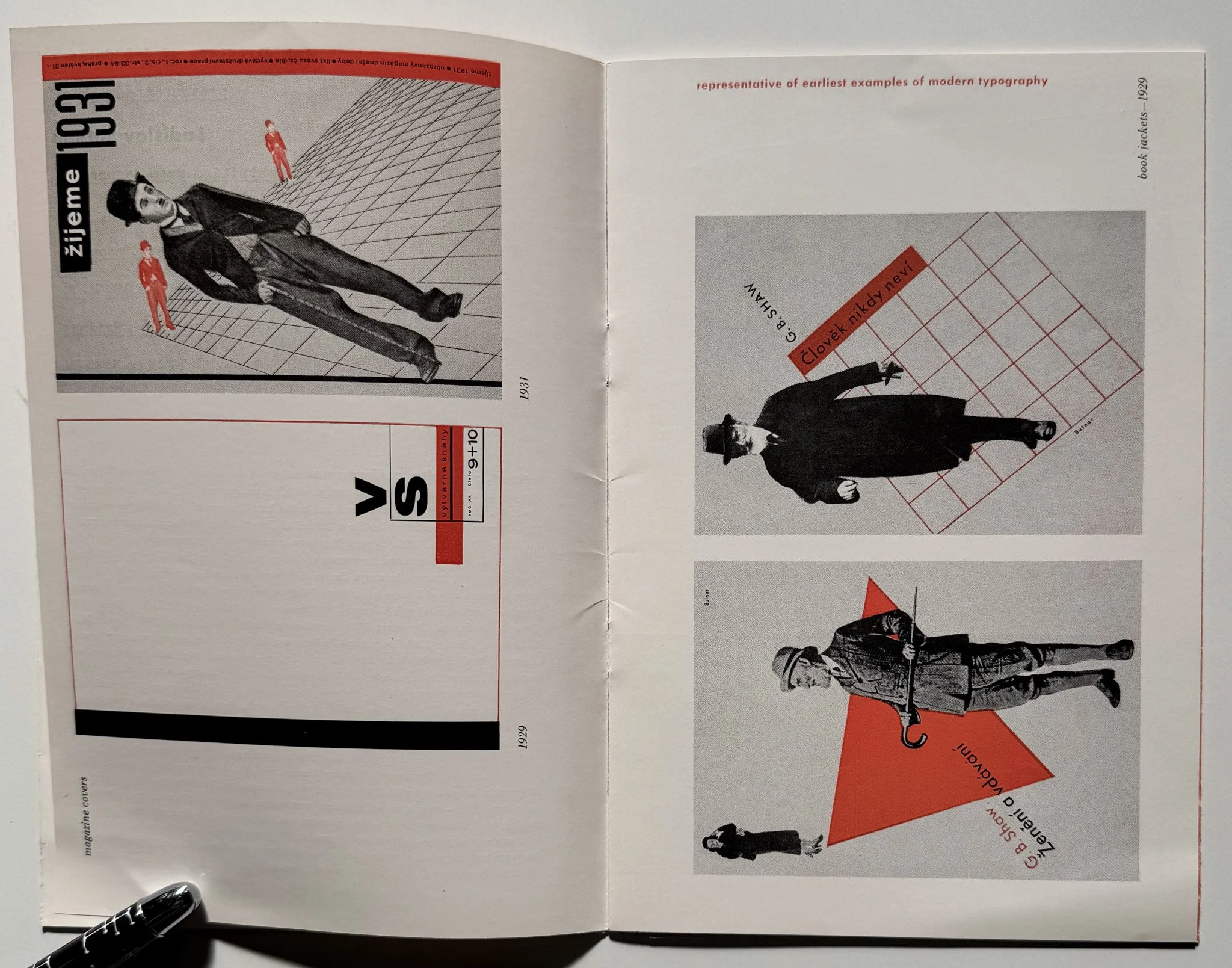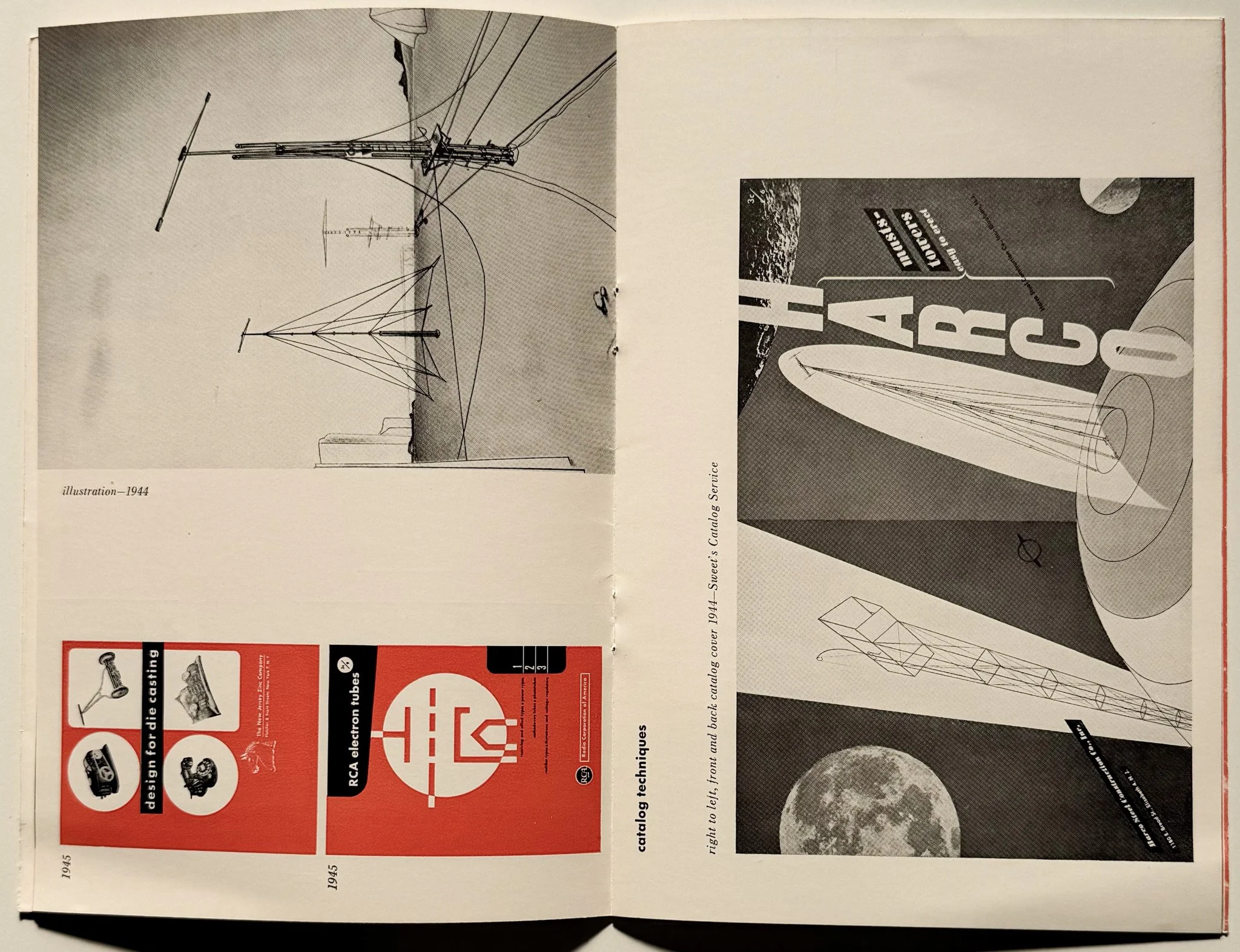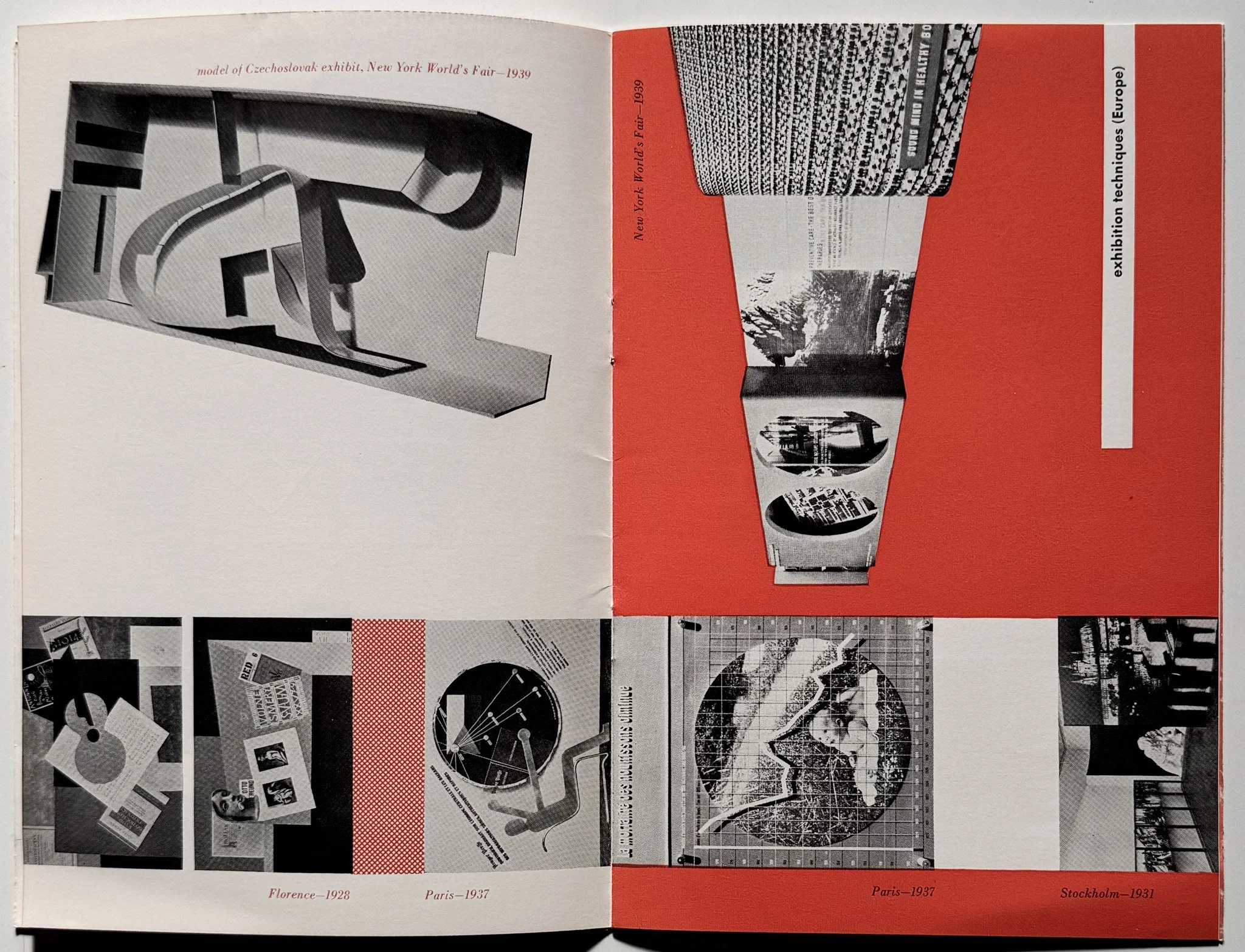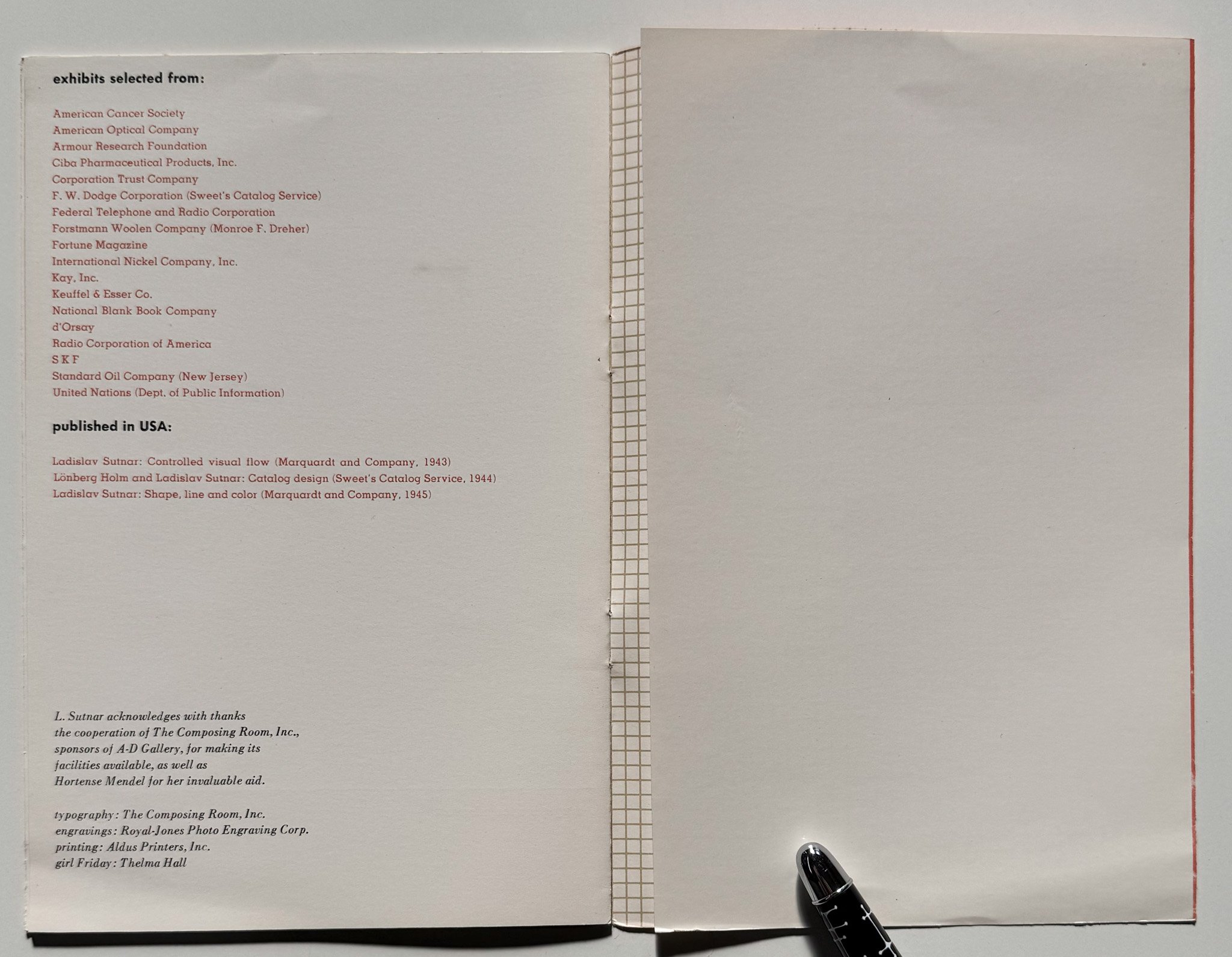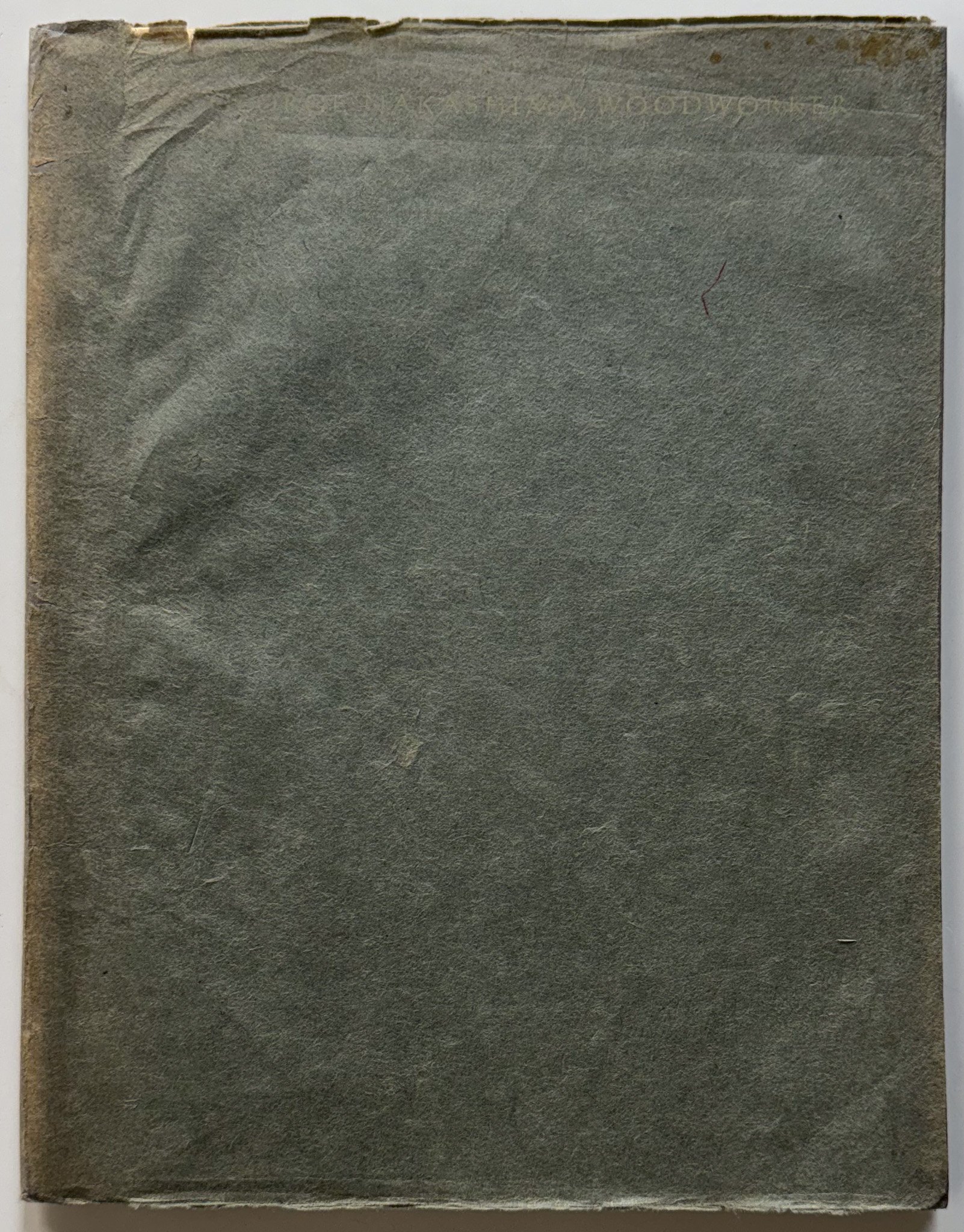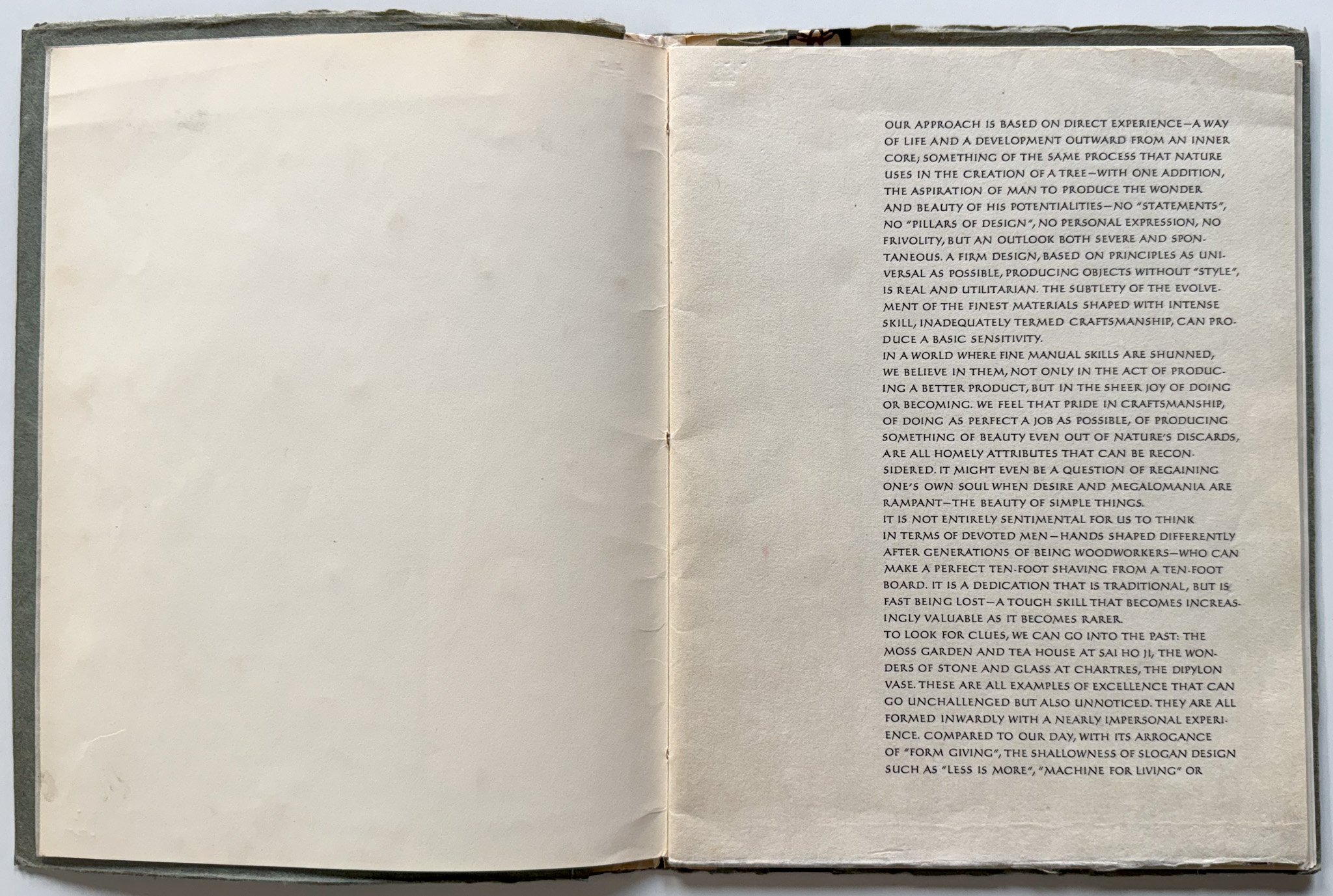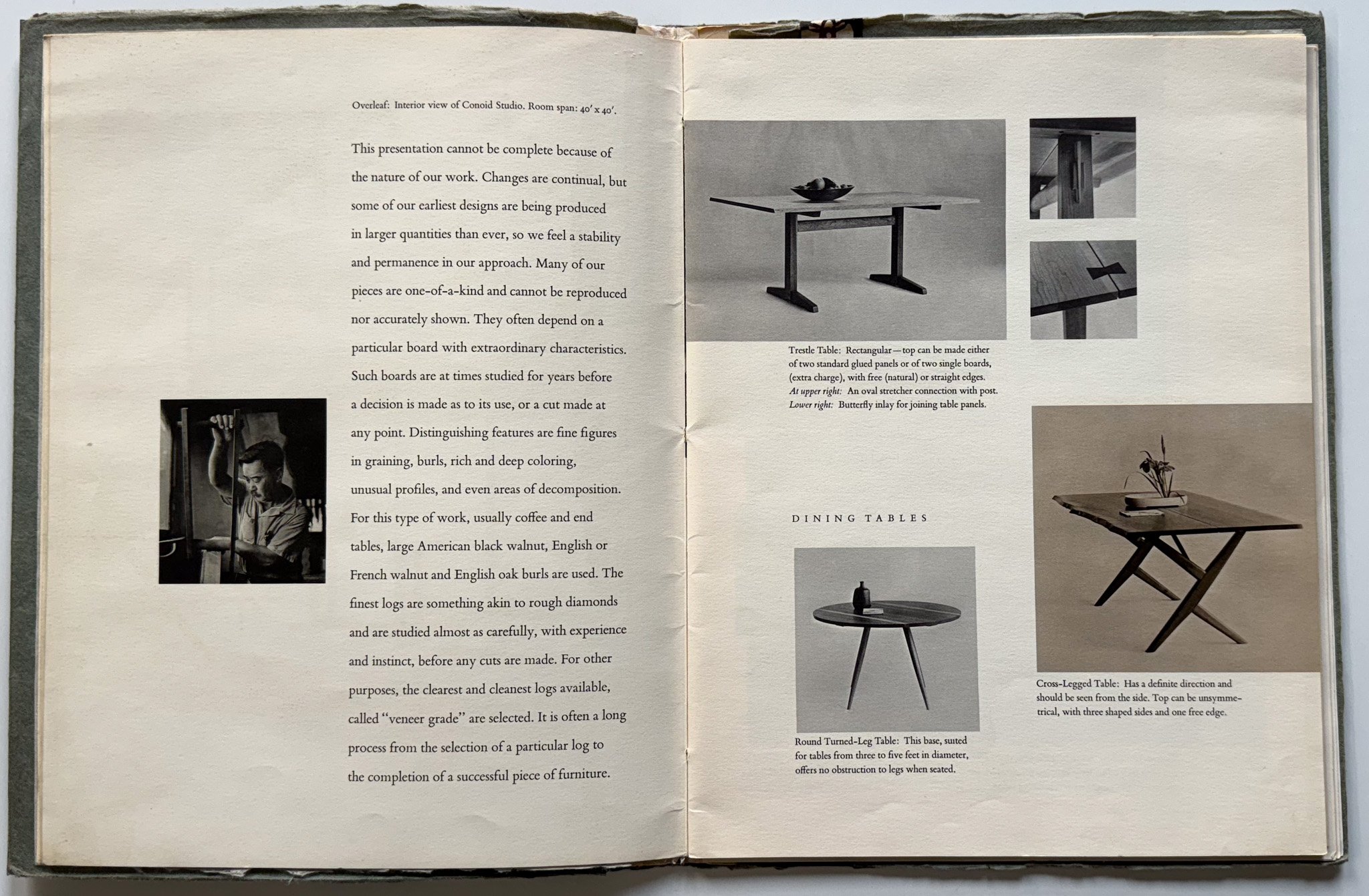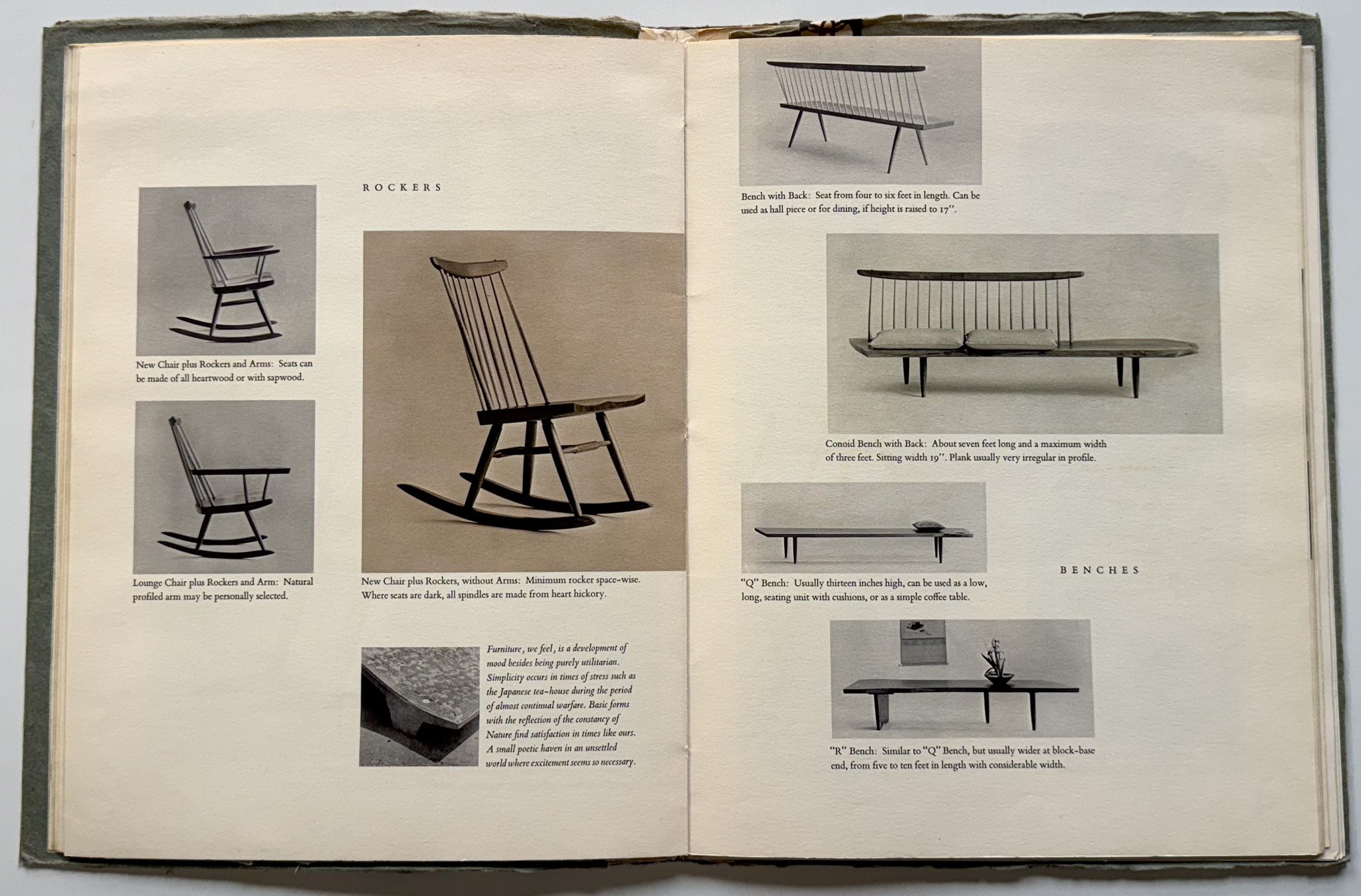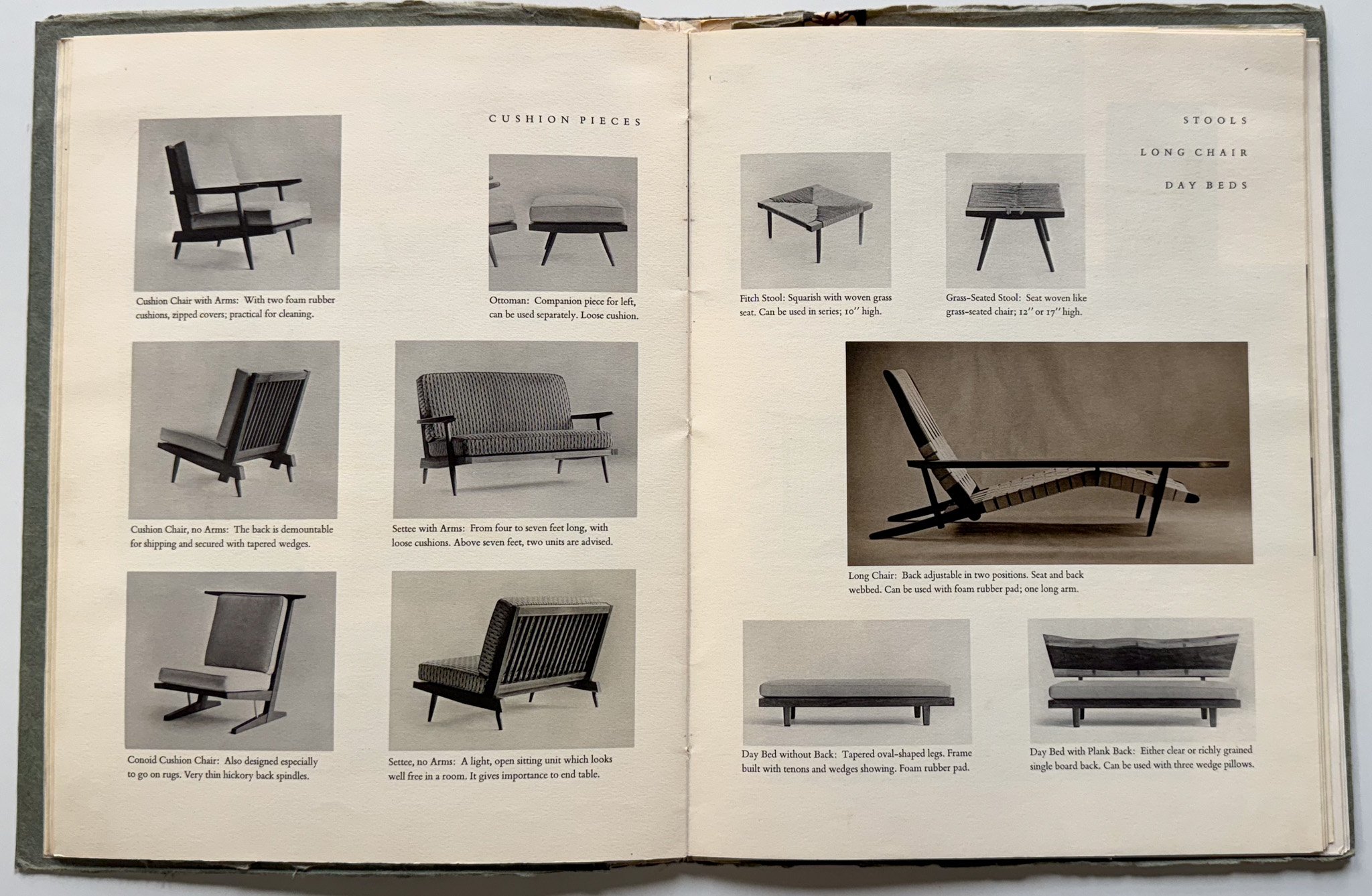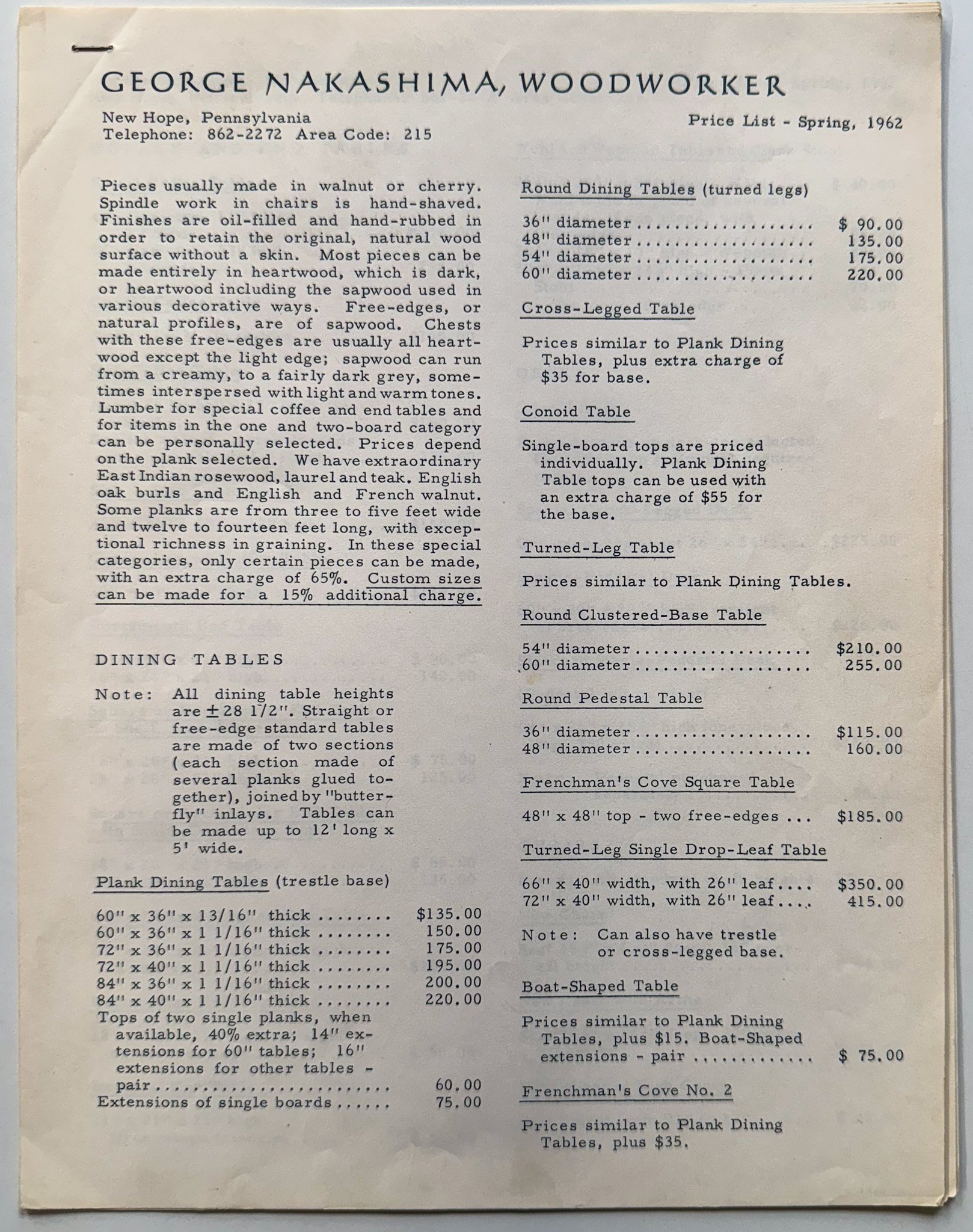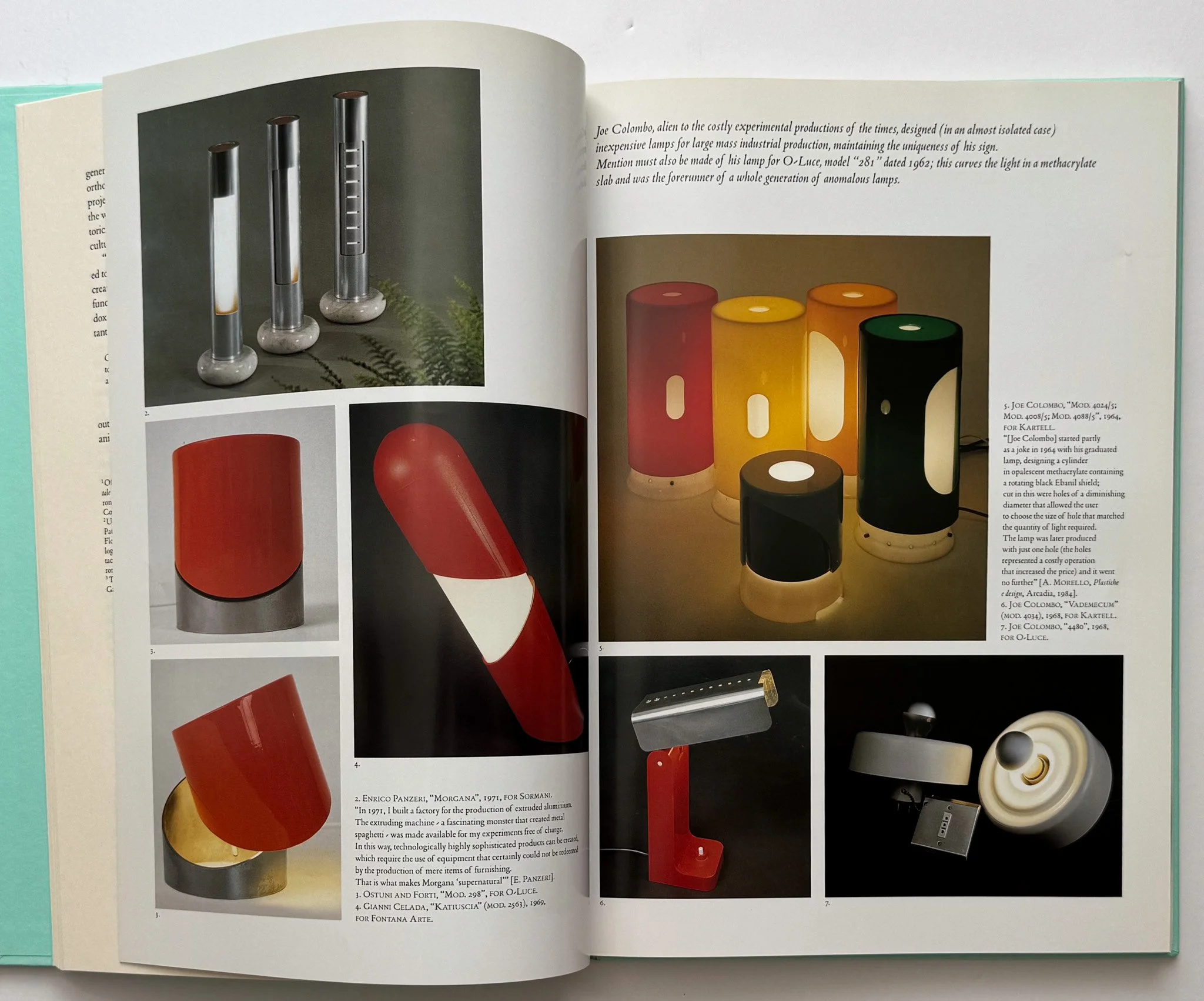 Image 1 of 8
Image 1 of 8

 Image 2 of 8
Image 2 of 8

 Image 3 of 8
Image 3 of 8

 Image 4 of 8
Image 4 of 8

 Image 5 of 8
Image 5 of 8

 Image 6 of 8
Image 6 of 8

 Image 7 of 8
Image 7 of 8

 Image 8 of 8
Image 8 of 8









New York New York: A Study of the Quality, Character, and Meaning of Open Space in Urban Design
First edition of Lawrence Halprin’s report on zoning and urban spaces, based on New York City’s request that he investigate the open spaces in NYC housing and urban renewal areas and make recommendations for improvements. Small 4to, printed wrappers, 119 pages with b/w photographs, illustrations, and plans. Published in 1968 by the City of New York Housing and Development Administration with graphic design by Barbara Stauffacher. Halprin (1916-2009), a landscape architect, designer, and teacher, was a student of Gropius and Breuer at Harvard; his classmates included Catherine Bauer, William Wurster, I.M. Pei, and Philip Johnson. A critic of rigid high modernism, Halprin evolved a post-modernist vocabulary that accounts for the specific social, economic, cultural and ecological histories of a site combined with the equally diverse needs of potential users. His public spaces often achieved a narrative quality along with a timeless beauty—the architectural critic Ada Louise Huxtable deemed a Portland plaza project “one of the most important urban spaces since the Renaissance.” The present work includes six case studies: Westside, Penn Station South, Bellevue South, Tompkins Square, Cadman Plaza, and Dayton Towers. Foxing and damp staining to front wrapper; light soiling to rear wrapper. Chipping to spine. Hinges slightly weakened.
First edition of Lawrence Halprin’s report on zoning and urban spaces, based on New York City’s request that he investigate the open spaces in NYC housing and urban renewal areas and make recommendations for improvements. Small 4to, printed wrappers, 119 pages with b/w photographs, illustrations, and plans. Published in 1968 by the City of New York Housing and Development Administration with graphic design by Barbara Stauffacher. Halprin (1916-2009), a landscape architect, designer, and teacher, was a student of Gropius and Breuer at Harvard; his classmates included Catherine Bauer, William Wurster, I.M. Pei, and Philip Johnson. A critic of rigid high modernism, Halprin evolved a post-modernist vocabulary that accounts for the specific social, economic, cultural and ecological histories of a site combined with the equally diverse needs of potential users. His public spaces often achieved a narrative quality along with a timeless beauty—the architectural critic Ada Louise Huxtable deemed a Portland plaza project “one of the most important urban spaces since the Renaissance.” The present work includes six case studies: Westside, Penn Station South, Bellevue South, Tompkins Square, Cadman Plaza, and Dayton Towers. Foxing and damp staining to front wrapper; light soiling to rear wrapper. Chipping to spine. Hinges slightly weakened.













